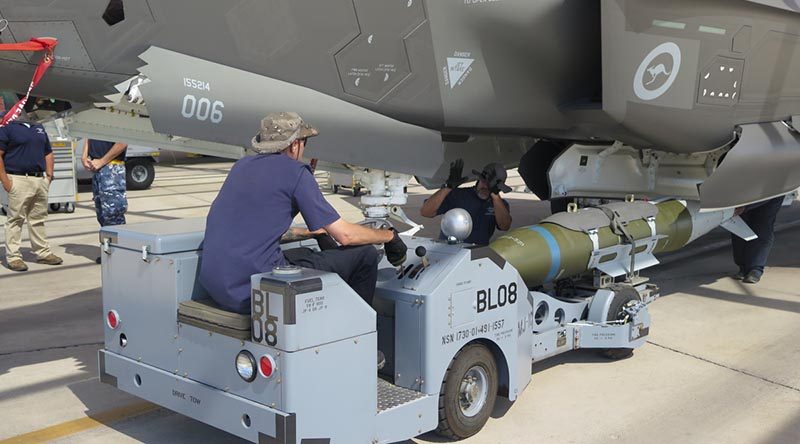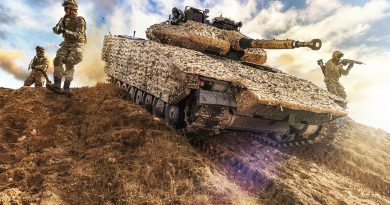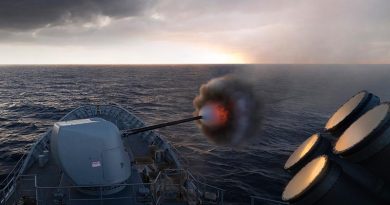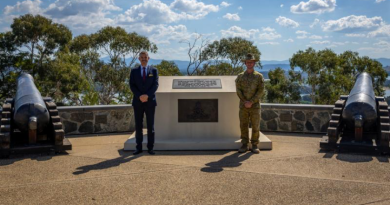First Aussie F-35 bomb drops

An Australian F-35A aircraft dropped two inert GBU-31v3 Joint Direct Attack Munition (JDAM) weapons for the first time on 20 July, marking a ground-breaking step in the evolution of the Royal Australian Air Force’s fifth-generation strike capability.
CAPTION: Lockheed Martin personnel load one of the first inert GBU-31 guided bombs into an Australian F-35A Joint Strike Fighter. Photo by Larone Thomas.
Aircraft A35-006, piloted by the Commanding Officer of No. 3 Squadron Wing Commander Darren Clare released the weapons over the Barry M. Goldwater range in Arizona, US.
Wing Commander Clare said the weapons impacted their targets precisely.
“You can feel the movement of the weapon-bay doors as they open and a reasonably significant thump when 4000 pounds of bombs fall from the aircraft,” Wing Commander Clare said.
“I was able to clearly watch the bombs impact on the targeting pod from the screen in the cockpit as well.”
The first in-flight weapons release of a GBU-31 JDAM occurred in October 2012, when Major Matthew Phillips of the US Air Force, released an instrumented GBU-31 over the China Lake test range in California, from the left internal weapons bay.
But this was the first weapon drop by an Aussie pilot in an Aussie F-35.
The F-35A is designed to carry a payload of up to 8200kg using 10 weapon stations, including four internally in two weapon bays, to maximise stealth capability.
The conventional take-off and landing variant Australia is acquiring also has three external weapon stations for each wing if required.
Weapons Sub-Project Manager Squadron Leader Richard Jarek of the Joint Strike Fighter Division said that at initial operating capability in December 2020, the Australian F-35A weapons suite would include the AIM-120 advanced medium-range air-to-air missile, the AIM9X Sidewinder air-to-air missile, GPS-guided JDAM bombs, small diameter bombs and the internal 25mm gun.
“A key feature of the aircraft’s low-observable design is its ability to carry weapons internally,” Squadron Leader Jarek said.
“This makes the F-35A more difficult to target, thereby enhancing its survivability.”
Wing Commander Clare said it was great to see that, every week the RAAF is taking small – and large – steps towards its goal of getting Australian jets prepared to defend Australia as the RAAF transitions to the new aircraft.
.
.
.
.
.
.

.
.





